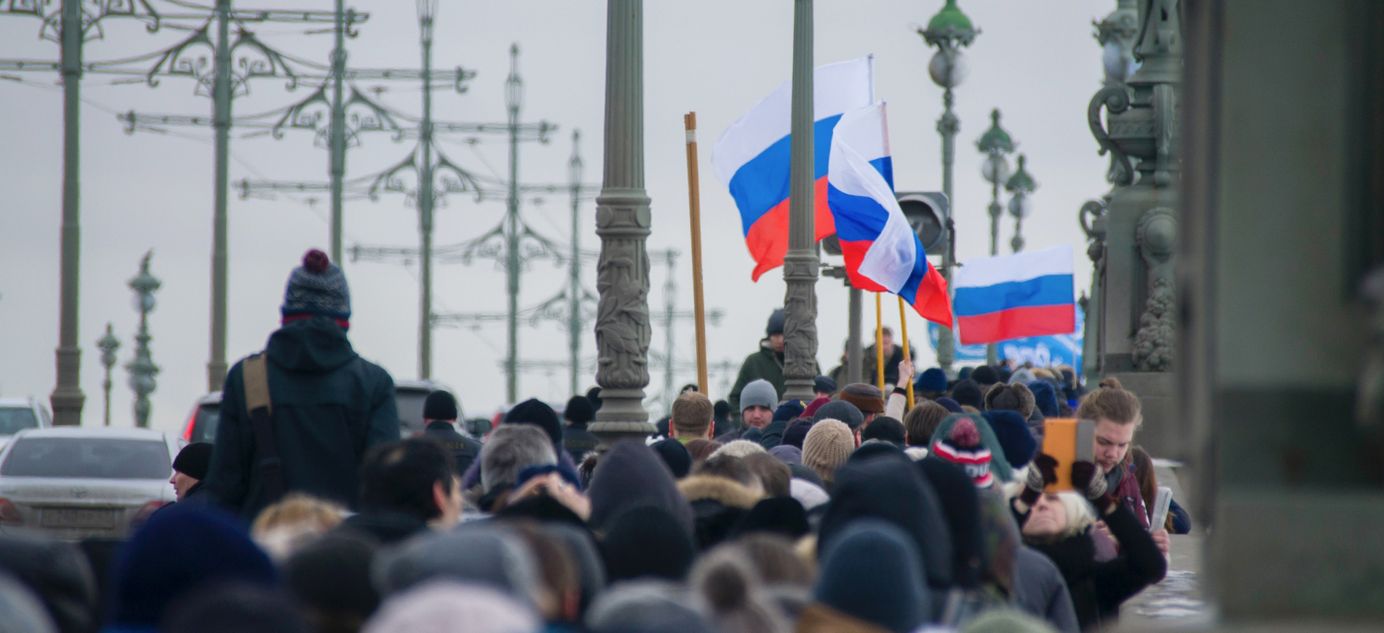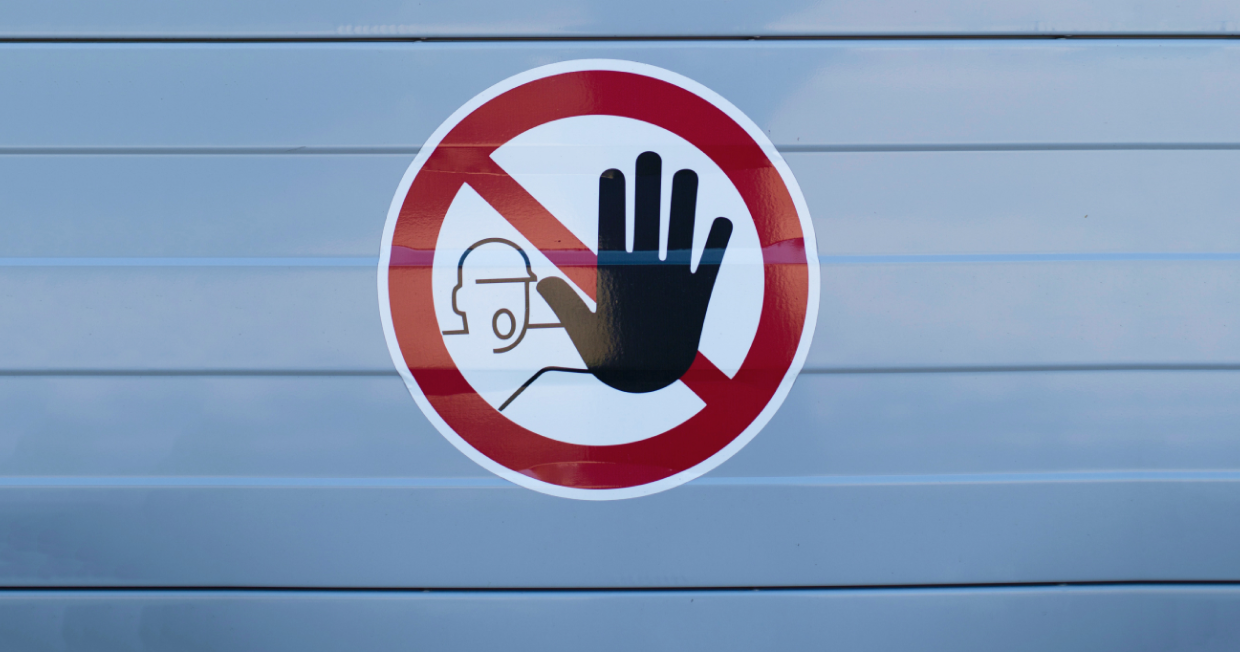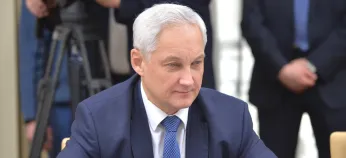
Year in review: looking back at 2021
The year 2021 was a seismic year for Russia as the Kremlin launched an unprecedented crackdown on the political opposition to President Vladimir Putin, talk of war escalated and inflation spiraled. In our review of 2021, we look at four main topics: domestic politics, foreign policy, the economy, and the fate of Russia’s coronavirus vaccine.
1. Domestic politics: war on the opposition, and the media
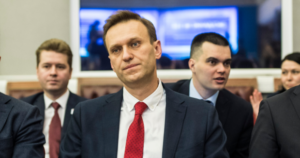
For the first time in Putin’s 22-year rule, the Russian regime has been successful in decisively crushing the domestic political opposition. The top news story at the beginning of the year was opposition leader Aleksei Navalny’s dramatic return to Russia after three months in Germany recovering from a nerve agent attack almost certainly orchestrated by the Federal Security Service (FSB). A year later, Navalny is in jail, his organization lies in ruins, independent media outlets are facing sustained attacks and the kind of opposition street protests that Russia saw at the start of 2021 are all-but unthinkable.
- Navalny returned to Moscow on January 17 and was immediately arrested. Two days later, his Anti-Corruption Fund (FBK) published a video investigation into ‘Putin’s Palace’, a huge property on the Black Sea coast. The film went on to get 120 million views on YouTube, making it the year’s most popular Russian-language video.
- Two weeks later, Navalny was sentenced to three and a half years in prison for breaching the terms of an earlier suspended sentence. In September, a new criminal case was opened against Navalny on charges of extremism — if found guilty, his prison term could be extended for another 15 years.
- Protests by Navalny’s supporters following his arrest were broken up by police. Then, in June, the courts designated FBK as an extremist organization, meaning that any employees could be jailed. Shortly after, the Duma passed a law making it possible to prosecute someone for supporting an extremist organization even if that organization was not designated ‘extremist’ at the time. In the wake of that, most of the FBK leadership and prominent pro-Navalny activists fled abroad.
- Opposition protests in Moscow in January look like they were the last major opposition street protests for some time: their organizers are now either in jail or in exile, and punishments for participants in unsanctioned demonstrations are getting more severe (Russia detained 50 percent more people in 2021 for protesting than it did in the whole of the last decade).
- Even the Communist Party, which provides token opposition while remaining ultimately loyal to the Kremlin, came under pressure. In the wake of September parliamentary elections (that saw the Communist Party garner a large protest vote despite evidence of widespread fraud), one of its more radical leaders, Valery Rashkin, who has publicly backed Navalny, was detained on poaching charges when the carcass of an elk was found in the trunk of his car. He has since been stripped of his parliamentary immunity.
- At the same time as cracking down on the opposition, the government began a campaign against the country’s few remaining independent media outlets. Its chief weapon has been four-year-old legislation on ‘foreign agents’. Top independent news agency Meduza was branded a foreign agent in the spring. Shortly afterwards, television channel Dozhd, outlet Mediazona and the Russian partner of investigative outlet Bellingcat, The Insider, which released an investigation into Navalny’s poisoning, suffered the same fate. Once labelled a foreign agent, publications struggle to generate advertising revenues and are obliged to submit tons of paperwork to the Ministry of Justice — on pain of criminal charges. Several publications were even shut down – investigative outlet Proekt was designated an “undesirable organization” (a label that automatically leads to a criminal case if the organization continues its work) and all publications sponsored by exiled tycoon Mikhail Khodorkovsky were closed after warnings about extremism.
- Individuals can also be branded foreign agents. In less than a year, 75 people have been placed on this list. Most of these are journalists for whom the designation effectively amounts to a complete ban on working inside Russia. Each individual on the list is obliged to submit details of all their personal expenses to the Ministry of Justice and must preface all social media posts with a 10-line disclaimer.
- As a result, Russian media can now be divided into three clear groups: state-owned media and propaganda channels (news agencies TASS and RIA Novosti, and television channel RT), notionally independent media owned by those on the government’s ‘wavelength’ (RBK, and newspapers Kommersant and Vedomosti), and a handful of independent outlets with the ‘foreign agent’ label.
- The year ended much as it had begun: Russia’s oldest NGO, Memorial, was shut-down by court order in December. Memorial gathered and archived data about the state killings and repressions of the Soviet period, and was able to function for years in the face of anger among former KGB operatives. The fact that the authorities finally decided to shut Memorial down is deeply symbolic — and says much about the direction of travel in Russia today.
Why the world should care: The tightening of the screws in Russian domestic politics in 2021 was unprecedented in its severity and scale. For many, the new approach is reminiscent of wartime restrictions — and there are growing fears that it presages a significant military confrontation.
2. Foreign policy: gearing up for renewed conflict with the West
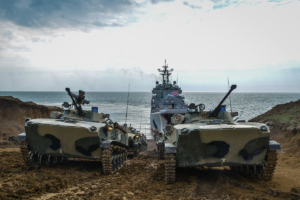
A steady deterioration in relations between Russia and the U.S. last year culminated in the widely-discussed possibility of a Russian invasion of Ukraine. Rather than retell the familiar story of escalating conflict, we will review the main events of the last two years:
- Early 2020. Six months after Volodymyr Zelensky defeated Petro Poroshenko in Ukraine’s presidential election with a pledge to achieve peace, Moscow responded by dismissing Vladislav Surkov, the ideologue of the Donbas conflict. His place as the lead negotiator on Ukraine went to the more moderate Dmitry Kozak.
- March-July 2020. Kozak and Andriy Yermak, Zelensky’s chief of staff, sign an agreement to set up the first multi-party negotiations since 2014, which are to include representatives of Ukraine and the unrecognized statelets in Eastern Ukraine. This caused a scandal in Ukraine, and, under pressure, Yermak withdrew his signature. In July 2020, the two sides agreed a ceasefire in Donbas, but it was quickly violated. This marked the end of meaningful negotiations between Moscow and Kyiv.
- Fall 2020. Newly-elected U.S. President Joe Biden said he will make diplomacy the cornerstone of US foreign policy, opposing authoritarianism by peaceful means.
- March 2021. As Biden settles into the White House, Russia assembled troops on the Ukrainian border. On March 19, Biden publicly described Putin as a murderer. After this, the number of Russian troops on the Ukrainian border reached 80,000. Biden called Putin and proposed a face-to-face meeting, which resulted in a June encounter between the two men in the Swiss city of Geneva. No major agreements were reached.
- Summer 2021. The Ukrainian authorities pushed forward two laws that irritated Moscow. The Ukrainian parliament passed legislation in June about Ukraine’s ‘native peoples’ without mentioning Russians. Then, in August, the government approved a draft law on a ‘transition period’ following the hypothetical return of lost territory in Eastern Ukraine in which Russia was named as an “occupier”, the powers of the regional authorities were to be curtailed and a significant part of the local population excluded from an amnesty.
- Fall 2021. Ukraine used Bayraktar drones, purchased from Turkey, for the first time. NATO carries out major exercises in the Black Sea. All of this seemed to convince the Kremlin that its military muscle-flexing in the spring had not delivered results.
- November 2021. Russian troops began again to assemble on the Ukrainian border: this time in greater numbers and with the capability to launch a genuine military operation. Western media outlets reported regularly on Russian invasion plans.
- December 2021. Biden and Putin spoke at the beginning of the month, agreeing that Russia and the U.S. will discuss the possibility of restricting NATO expansion — something Putin dreams of halting. On Dec.17, the Russian Foreign Ministry published a draft agreement for talks (though it looked like it was designed to be unacceptable to the U.S. and NATO). Top Russian officials accompanied this with clear military threats against Ukraine. New talks are scheduled in Geneva for later this month, but making predictions about the outcome appears foolish.
What next?
While much is guesswork, it’s reasonably clear that the Kremlin has some kind of plan for further escalation after the almost inevitable rejection of Moscow’s ultimatum.
Skeptics who do not believe Russia will invade Ukraine can sum up their arguments in a single thought: a military operation in which Russia’s opponents (from Ukraine to the U.S.) have the opportunity to prepare in advance will be too expensive for Moscow, both militarily and economically (tough new Western sanctions would inevitably follow any invasion).
Among those who believe that an invasion is possible, there are several counter-arguments:
- A military operation does not mean a full-scale land invasion of Ukraine. Russia is more than capable of badly damaging the Ukrainian army via air, missile and artillery strikes. And there are other options. For example, sources recently told Kommersant that one idea under discussion was to recognize the independence of the rebel republics in Eastern Ukraine and then officially deploy Russian forces to them. “However, behind closed doors more radical ideas are being discussed,” the article added (the authors were two of the most authoritative foreign policy journalists working in Russia today, Yelena Chernenko and Vladimir Solovyov).
- The December ultimatum to the U.S. leaves Russia with few options if this month’s talks fail. Back in the spring, Russia attempted a bluff when it massed troops on the Ukrainian border; if this is repeated, and again nothing happens, nobody will ever take such threats seriously.
- Nobody disputes that the Kremlin recognizes the high cost of military action. However, in the seven years since the annexation of Crimea in 2014, the government has worked toward ensuring that the economy could survive in total isolation (including developing a domestic version of the SWIFT payments system that already handles 20 percent of bank transactions). In addition, Putin has every reason not to believe that the West would impose a total embargo on Russian oil and natural gas: in the initial stages of its renewable energy transition, Europe is reliant on Russian natural gas like never before, while Russia’s removal from the global oil market would destabilize international markets and cause a huge economic shock.
- Most importantly, while invading Ukraine would be expensive, the cost has risen in recent years and will grow faster in the future. If the Kremlin feels that a military response is inevitable after talks with the U.S., such an operation could happen precisely because a future war might be judged even more risky and expensive.
Why the world should care: The Kremlin looks to be on course for the most severe conflict with the West in modern Russian history — the outcome will be crucial not just for Russia, but the whole world.
3. Economics: macroeconomic stability and inflation-fighting
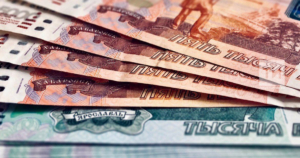
The main economic story in Russia last year was a sharp rise in inflation. But the Central Bank acted early and quickly – and price increases appear to have passed their peak. Barring any major disasters, or unexpected windfalls, expectations for economic growth this year are decidely modest.
Struggling to control inflation
Russia’s decision to drop nationwide coronavirus restrictions, as well as rising energy prices, enabled the economy to recover rapidly in the first part of the year. According to official estimates, the economy grew 4.7 percent between January and November. That is in line with the prognosis for Europe, and one percentage point less than projections for the United States.
Overall, Russia enjoyed a year of financial stability: the value of gold and foreign exchange reserves increased 5.5 percent, there was a budget surplus of 0.5 percent of GDP, and Russia’s sovereign wealth fund (the National Welfare Fund) grew to be worth about $190 billion (according to the government, it is expected to almost double by 2024).
As in other developed nations, the big problem was the rapid acceleration of inflation, which totalled 8.4 percent through the first 11 months of 2021. That’s the highest level since Jan. 2016, and twice the Central Bank target rate. However, the authorities responded convincingly and — despite parliamentary elections — generally steered clear of any dangerous moves to introduce price regulation.
- At first, price rises seemed to be an anomaly fuelled by the rapid post-pandemic economic recovery. The government initially reacted with a series of anti-market measures — attempts to regulate prices and protectionist export duties on grain and other agricultural products. Food prices assumed great political significance in the run-up to the fall’s State Duma elections and anti-market measures prompted fears of a return to a Soviet-style command economy. For the most part, however, such fears did not come to pass.
- The Central Bank held interest rates at a record low of 4.25 percent until February when Central Bank head Elvira Nabiullina warned that the days of a soft monetary policy were over. In June – a full six months before U.S. Federal Reserve Chair Jerome Powell admitted it – Nabiullina said upticks in inflation were not a temporary phenomenon and that there was a serious risk of a vicious cycle of rising prices.
- As a result, the Central Bank has doubled interest rates — from 4.25 percent to 8.5 percent — since March. By the end of the fall it was clear trhat this was working – in November, analysts began saying that inflation was past its peak. The official numbers for December remained high, but were down on the month before.
Stability — but not much chance of growth
The Bell invited economists to consider different scenarios for the Russian economy this year: from the worst (emergence of a new, more deadly strain of the coronavirus) to the best (the pandemic fades away and coronavirus becomes no worse than seasonal flu). It was striking that the range of prognoses did not greatly vary: for example, GDP growth in the worst case scenario is expected to be up to 2.2 percent and, in the best, up to 2.9 percent. In any event, inflation is predicted to remain between 4 percent and 5.5 percent. In other words, the expectation is for the continuation of a decade-long Russian economic trend: a lack of significant growth at the same time as macroeconomic stability.
This macroeconomic stability is not just down to high energy prices. The government has also managed the situation effectively. And Nabiullina appears to have cemented her authority as head of the Central Bank (President Vladimir Putin devoted a substantial amount of time in his December press conference to praising her work).
However, the scenarios explored by the economists ignored one possibility, which has been becoming ever more plausible with each passing day: the possibility of a war with Ukraine. New Western sanctions would be all-but inevitable if conflict did break out, and they would likely include Russia’s expulsion from international payments system SWIFT, restrictions on banks to stop foreign exchange transactions and — possibly — limits on exports of Russian oil and gas to the U.S. and Europe. When Iran faced a similar package of sanctions in 2012, it lost 20 percent of its GDP, saw its oil exports almost halved, and experienced a run on its currency.
Why the world should care: By most accounts, the Russian economy was well managed last year by a team of competent and — more or less — effective bureaucrats. Even inflation seems to have been tamed. However, a war in Ukraine would destroy these achievements almost entirely.
4. Coronavirus: Russia loses out in the battle of the vaccines
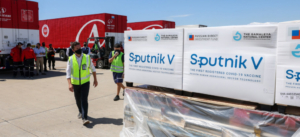
Putin hailed Russia’s coronavirus vaccine Sputnik-V in 2020 as “the world’s first registered vaccine against coronavirus”. It was even named in honor of the first artificial satellite to orbit the world in 1957 (that allowed the Soviet Union to claim a spectacular victory over the U.S. in the space race). Despite the rhetoric, at the time interim results from final phase testing for Sputnik-V were still six months away — instead, hundreds of top officials and corporate managers (including Putin’s own daughter) tested the vaccine at their own risk.
- To allow Putin to announce that Russia had developed the world’s first vaccine, its developer – the Gamaleya Institute – cut lots of corners. For example, Sputnik-V was registered even though it had been trialled in just two groups of 38 volunteers. This brought criticism from Western pharmaceutical companies and the U.S. authorities.
- In late 2020, the Gamaleya Institute announced that interim results from the third round of testing gave Sputnik-V a 92 percent effectiveness rate — two percentage points better than Pfizer and BioNTech. But it was not until February 2021 that those interim results — detailing a trial involving about 20,000 people — were published in the widely respected medical journal The Lancet. That article confirmed Sputnik’s effectiveness at 91.6 percent. After this, Western attitudes to the Russian vaccine began to warm. Media outlet Bloomberg described it as Russia’s greatest scientific breakthrough since Soviet times and Josep Borrel, the EU’s High Representative for Foreign Affairs, congratulated Russian Foreign Minister Sergei Lavrov.
- The Kremlin was eager to reap the political dividends of this scientific achievement, and made plans to use Sputnik-V in its plans to expand Russian soft power. Kirill Dmitriev, head of the Russian Direct Investment Fund, was charged with exporting Sputnik. In his public statements, Dmitriev brimmed with optimism. He said in late 2020 that Russia had orders for 1 billion doses and could manufacture more than 500 million doses a year. The greatest interest in the vaccine, he said, came from countries in Latin America, the Middle East and Asia.
- But 2021 proved that things were more complicated. Russia’s pharmaceutical manufacturers had a hard time trying to scale up the laboratory version of the vaccine and reach industrial production levels. A lack of experience and equipment was compounded by the instability of the second dose of the two-shot Sputnik-V vaccine. It took about six months for Russia to begin commercial production. Even inside Russia, Sputnik-V was greeted with skepticism and take-up remained low. But there were bigger problems abroad. For example, Argentina, which took delivery of the first big batch of Sputnik-V — 300,000 doses — was sent only the first dose. The Argentinians had to wait several more months to receive the second shot.
- Dmitriev predicted at the beginning of 2021 that the Russian vaccine would be available to 700 million people and that every Russian could be jabbed by the summer. However, he was a long way from meeting these targets. At the end of the year, he said that 100 million people had received the vaccine in foreign countries (although it was unclear how many of these people had received both shots). Vaccination rates in Russia continue to stall (at the start of this month just 45 percent of the population was fully vaccinated).
Why the world should care: Russia’s plans to use Sputnik-V as a soft power asset have not yet come to pass — the vaccine is still not approved by the World Health Organization (WHO) or European regulators. The Russian authorities blame this on political lobbying by Western pharmaceutical companies; in response, Western regulators point to shortcomings in Sputnik-V’s registration process and Russia’s failure to supply necessary documentation.

